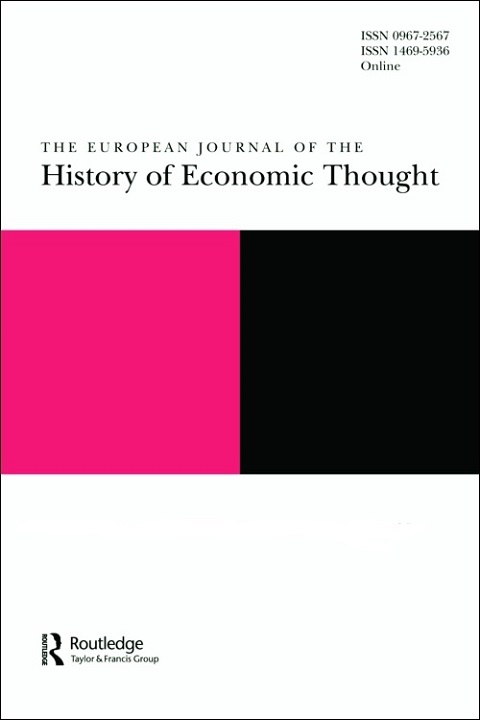
The European Journal of the History of Economic Thought
Volume 20, Issue 4, Aug 2013
Pages 547-571
- DOI: 10.1080/09672567.2011.653878
- Print ISSN: 0967-2567
- Online ISSN: 1469-5936
Bank liquidity risk: From John Law (1705) to Walter Bagehot (1873)
Abstract
By granting credit and issuing money, banks take a liquidity risk - that is, the risk of being unable to reimburse its notes in coins. Five different explanations of a bank liquidity crisis have been provided by different authors, since John Law and up to Walter Bagehot. First, according to Law (1703) and Steuart ([1767] [1998]), the distinction between money of account (the pound sterling) and money of payment (the guinea) may induce a bank run. Second, according to Cantillon (1730), Hume ([1752] 1972), Ricardo (1810-1823) and the Currency School (1837-1858), the bank reserve becomes insufficient as a consequence of a diminishing value of money allied with over issues. Third, according to Thornton ([1802] 1939, 1991) and the Banking School (1840-1857), it can occur as a consequence of a falling exchange rate that is not linked with over issues. Fourth, according to Smith (1776) and the Banking School, discounting of fictitious bills, by decreasing the shareholders' funds, leads to bank illiquidity. Lastly, according to Thornton ([1802] 1939, 1991) and Bagehot (1873), the liquidity crisis is a consequence of bank panics: a "flight" to money for Thornton, a "flight" to credit for Bagehot. The analysis of these five different explanations sheds new light on classical monetary controversies.
Related Searches
Keywords
Subjects
Currents of Thought
Periods
- 1700-1755. Inception of Systematic Economic Analysis
- 1756-1800. Emergence of Modern Currents of Political Economy
- 1801-1870. Classical Political Economy and its Critics
- 1871-1914. Development of Major Contemporary Currents of Thought: Marginalism, Institutionalism, Historicism and Socialism